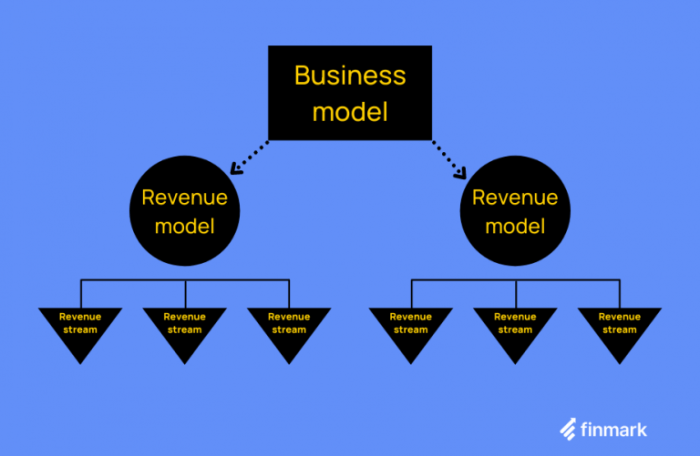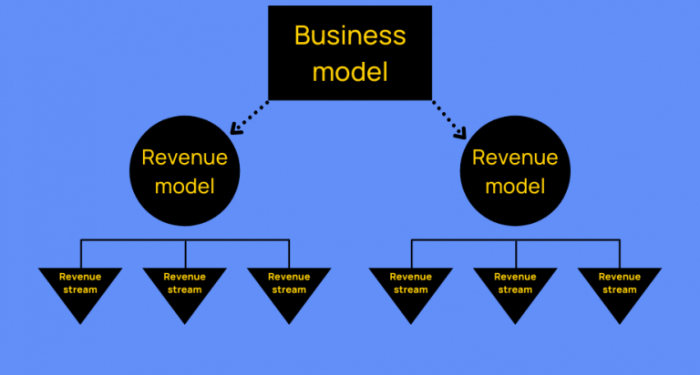Exploring the realm of Top revenue-share business models that work, this introduction aims to provide readers with an insightful glimpse into the world of revenue-sharing strategies that drive success in businesses.
Delving deeper into the intricacies of revenue-share models and their impact on different industries
Overview of Revenue-share Business Models
Revenue-share business models involve a partnership between a business and another party, where revenue generated from a product or service is shared based on a predetermined agreement. This type of model allows both parties to benefit from the success of the venture.Key Components of a Successful Revenue-share Model:
- Clear Agreement: A well-defined contract outlining the terms of revenue sharing is crucial for a successful partnership.
- Transparency: Open communication and sharing of financial data between the parties involved is essential for trust and accountability.
- Incentives: Providing incentives for both parties to work towards maximizing revenue can lead to better outcomes.
- Performance Metrics: Establishing clear performance metrics to track progress and success is important for evaluating the effectiveness of the revenue-share model.
Benefits of Implementing Revenue-share Models for Businesses:
- Lower Financial Risk: By sharing revenue with partners, businesses can reduce their financial burden and risk associated with launching new products or services.
- Increased Motivation: Revenue-share models can motivate partners to work towards common goals and drive performance through shared incentives.
- Market Expansion: Collaborating with partners through revenue-sharing can help businesses reach new markets and customer segments more effectively.
- Scalability: Revenue-share models allow businesses to scale their operations and offerings without significant upfront costs, enabling growth and flexibility.
Examples of Top Revenue-share Models
Revenue-share models have proven to be successful for various companies across different industries. Let's explore some examples of companies that have effectively implemented revenue-share models.
Successful Companies Using Revenue-share Models
- Uber: Uber operates on a revenue-share model with its drivers, taking a percentage of each fare as commission. This model has allowed Uber to rapidly expand its network of drivers while incentivizing them to provide quality service.
- App Store: Apple's App Store follows a revenue-share model with developers, taking a percentage of the revenue generated from app sales. This has encouraged developers to create high-quality apps for the platform, leading to a thriving ecosystem.
- Airbnb: Airbnb utilizes a revenue-share model by charging hosts a percentage of each booking made through the platform. This has enabled Airbnb to scale its business globally while providing a platform for individuals to monetize their properties.
Comparison of Different Revenue-share Models
There are various revenue-share models used by companies, each with its own effectiveness depending on the industry and business model. Some common revenue-share models include:
- Subscription-based revenue share: Companies like Spotify and Netflix share revenue with content creators based on the number of subscriptions or views their content receives.
- Marketplace revenue share: Platforms like Etsy and eBay charge sellers a percentage of each sale made through their platform, fostering a vibrant marketplace for buyers and sellers.
- Advertising revenue share: Websites like YouTube and Twitch share advertising revenue with content creators based on the number of views or clicks their content generates.
Evolution of Revenue-share Models in Different Industries
Over time, revenue-share models have evolved to meet the changing needs of industries and consumers. Industries like e-commerce, sharing economy, and digital content creation have seen a significant shift towards revenue-share models as a way to align incentives between platform providers and users.
Companies are constantly experimenting with new revenue-share models to drive growth and innovation in their respective industries.
Factors to Consider When Implementing Revenue-share Models
Implementing a revenue-share model can be a strategic decision for businesses looking to diversify their revenue streams and incentivize partners. However, there are several factors that businesses should carefully consider before adopting a revenue-share model to ensure its success.
Risks and Advantages of Revenue-share Models
- Risks:One of the main risks of revenue-share models is the potential for conflicts of interest between partners, as each party may prioritize their own profits over the success of the partnership. Additionally, businesses may face challenges in tracking and verifying revenue accurately, leading to disputes and mistrust.
Moreover, if not structured properly, revenue-share agreements can be complex and difficult to manage.
- Advantages:On the other hand, revenue-share models offer several advantages, such as lower upfront costs for businesses, as they only pay partners based on actual revenue generated. This can be particularly beneficial for startups or companies with limited resources. Revenue-share models also align the interests of partners with the success of the business, fostering collaboration and mutual growth.
Furthermore, businesses can leverage the expertise and networks of partners to reach new markets and customers.
Tips for Optimizing Revenue-share Models
- Clear and Transparent Agreements:Ensure that revenue-share agreements are clearly defined, detailing how revenue will be calculated, distributed, and reported. Transparency is key to building trust and avoiding disputes.
- Regular Performance Evaluation:Regularly assess the performance of partners to identify areas for improvement and ensure that they are meeting their obligations. This can help optimize revenue-sharing arrangements and drive better results.
- Flexibility and Adaptability:Be open to adjusting revenue-share agreements based on changing market conditions, partner performance, or business goals. Flexibility is essential to maximizing the effectiveness of revenue-share models.
- Invest in Relationship Building:Cultivate strong relationships with partners through effective communication, collaboration, and support. Building a strong partnership can lead to long-term success and sustainable revenue growth.
Strategies for Building Successful Revenue-share Partnerships
Building successful revenue-share partnerships requires careful planning and execution. Here are some strategies to consider:
Negotiating Fair Revenue-sharing Agreements
When negotiating revenue-sharing agreements, it is crucial to ensure that both parties feel the deal is fair and mutually beneficial. Here are some best practices to follow:
- Clearly define the terms: Artikel the specific details of the revenue-sharing agreement, including how revenue will be calculated, payment schedules, and any exclusions or limitations.
- Set realistic expectations: Be transparent about revenue projections and ensure that both parties have a clear understanding of what to expect.
- Consider the value each party brings: Evaluate the contributions of each partner and ensure that the revenue split reflects the level of effort and resources invested.
- Include performance metrics: Establish clear metrics to measure the success of the partnership and determine how revenue will be adjusted based on performance.
Maintaining Long-term Revenue-sharing Partnerships
To maintain successful long-term revenue-sharing partnerships, it is important to foster trust and communication between partners. Here are some best practices to keep in mind:
- Regular communication: Stay in touch with your partner and keep them updated on any developments or changes that may impact the partnership.
- Address issues promptly: If any challenges or conflicts arise, address them proactively and work together to find solutions that benefit both parties.
- Review and revise agreements: Periodically review the revenue-sharing agreement to ensure it is still meeting the needs of both partners and make adjustments as necessary.
- Celebrate successes: Acknowledge and celebrate milestones and successes achieved through the partnership to show appreciation and strengthen the relationship.
Conclusion

Concluding our discussion on Top revenue-share business models that work, we have uncovered the key elements and strategies essential for thriving in the realm of revenue-sharing partnerships.
FAQ Corner
What are some common examples of successful revenue-share models?
Some well-known examples include Uber's driver-partner revenue-sharing model and Amazon's affiliate program.
How can businesses optimize their revenue-share model for maximum effectiveness?
Businesses can optimize their model by conducting regular performance evaluations, incentivizing partners, and fostering transparent communication.
What risks should businesses consider before adopting a revenue-share model?
Businesses should be wary of potential partner disputes, revenue fluctuations, and the need for continuous monitoring and adjustment.
How have revenue-share models evolved over time in different industries?
Revenue-share models have evolved to accommodate digital platforms, influencer marketing, and subscription-based services, among other trends.





